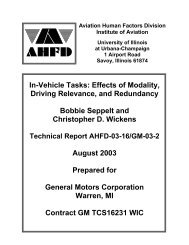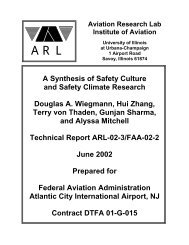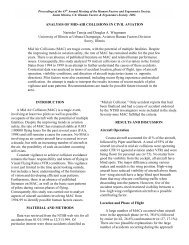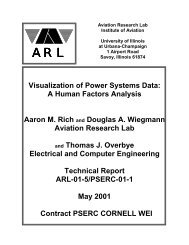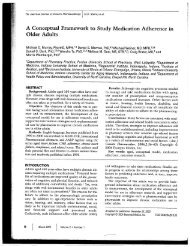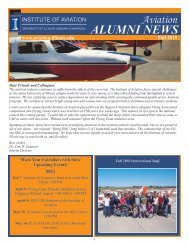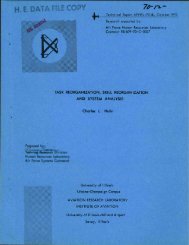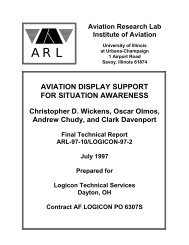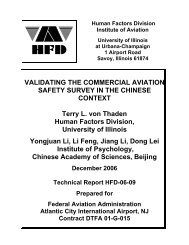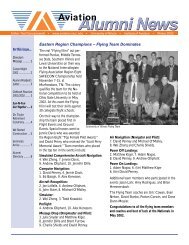Defining and Assessing Safety Culture in High Reliability Systems
Defining and Assessing Safety Culture in High Reliability Systems
Defining and Assessing Safety Culture in High Reliability Systems
Create successful ePaper yourself
Turn your PDF publications into a flip-book with our unique Google optimized e-Paper software.
Meyer, J. (1994). Beyond reason: How to conduct an <strong>in</strong>vestigation of organizational <strong>and</strong><br />
national culture. International Society for Air <strong>Safety</strong> Investigations, 27(5), 107-118.<br />
A method of conduct<strong>in</strong>g <strong>in</strong>vestigations of organizational <strong>and</strong> national culture from a Human<br />
Factors perspective was presented <strong>in</strong> this paper. Human factors were def<strong>in</strong>ed by <strong>in</strong>corporat<strong>in</strong>g<br />
the Reason <strong>and</strong> SHEL models. Different from technical <strong>in</strong>vestigation, human factors are<br />
cumulative, not necessarily observable, us<strong>in</strong>g qualitative research methods <strong>and</strong> content analysis.<br />
The format of data collection, analysis, <strong>and</strong> report<strong>in</strong>g for airl<strong>in</strong>e <strong>in</strong>dustry are given. A Forman for<br />
Individual Human Factors Analysis, Total Situational Awareness for Flight Deck Crew, <strong>and</strong><br />
Total Situational Awareness for Air Traffic Control are used to collect<strong>in</strong>g data. Content Analysis<br />
Cod<strong>in</strong>g Form, <strong>and</strong> Analysis of Organization <strong>Culture</strong> are used to analyze the data. A Form for<br />
Discussion <strong>and</strong> Analysis of Human Factors is developed for report<strong>in</strong>g the results.<br />
Kluckhohn <strong>and</strong> Strodtbeck identified six questions to def<strong>in</strong>e different culture, which are what the<br />
perception is of<br />
(1) human nature,<br />
(2) relationship between humans <strong>and</strong> nature,<br />
(3) time,<br />
(4) activity,<br />
(5) relationship between humans, <strong>and</strong><br />
(6) space.<br />
These questions are <strong>in</strong>corporated <strong>in</strong>to the situational awareness forms.<br />
The Analysis of Organization <strong>Culture</strong> identifies 10 important aspects for classify<strong>in</strong>g organization<br />
cultures:<br />
(1) how the organization’s resources are used,<br />
(2) structure of the organization,<br />
(3) measurement systems for safety <strong>and</strong> safety accountability,<br />
(4) reward systems,<br />
(5) selection <strong>and</strong> development systems,<br />
(6) response pattern to conflict <strong>and</strong> problems,<br />
(7) report<strong>in</strong>g system <strong>and</strong> feedback system,<br />
(8) organizational norms (shared say<strong>in</strong>gs, do<strong>in</strong>gs, feel<strong>in</strong>gs, etc.),<br />
(9) organizational policies <strong>and</strong> procedures compared with other similar organizations,<br />
(10) vision/mission.<br />
28




